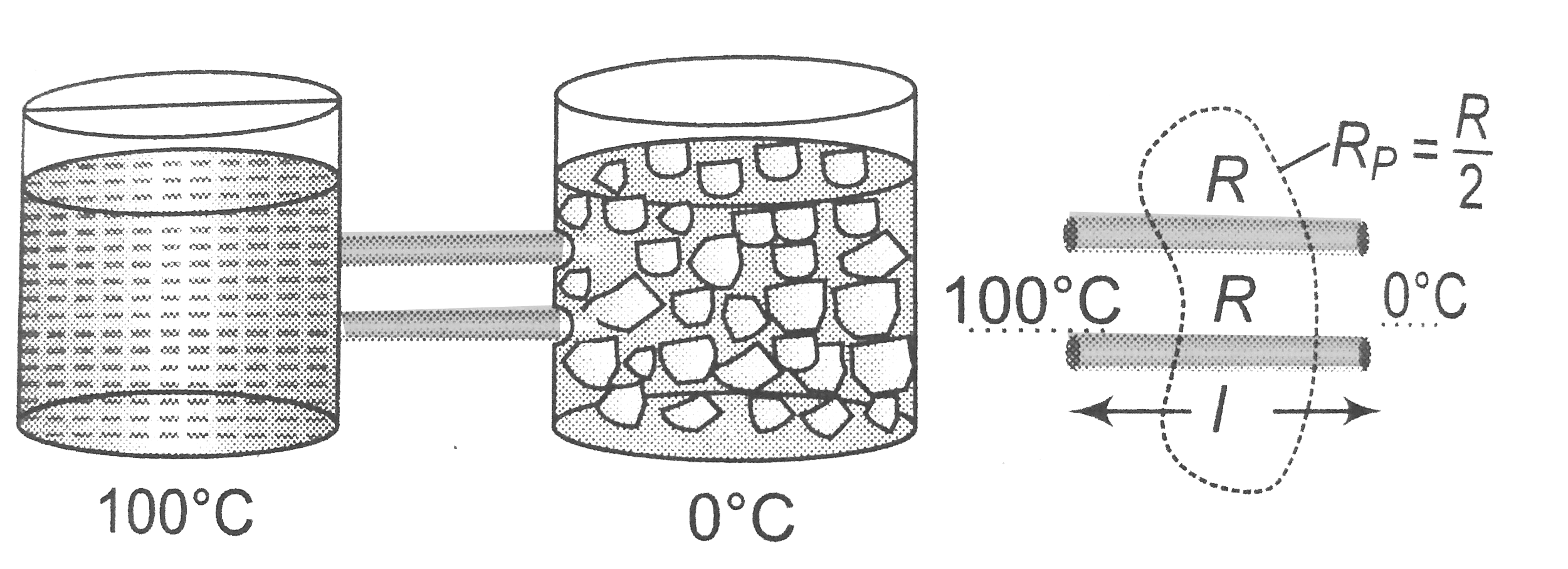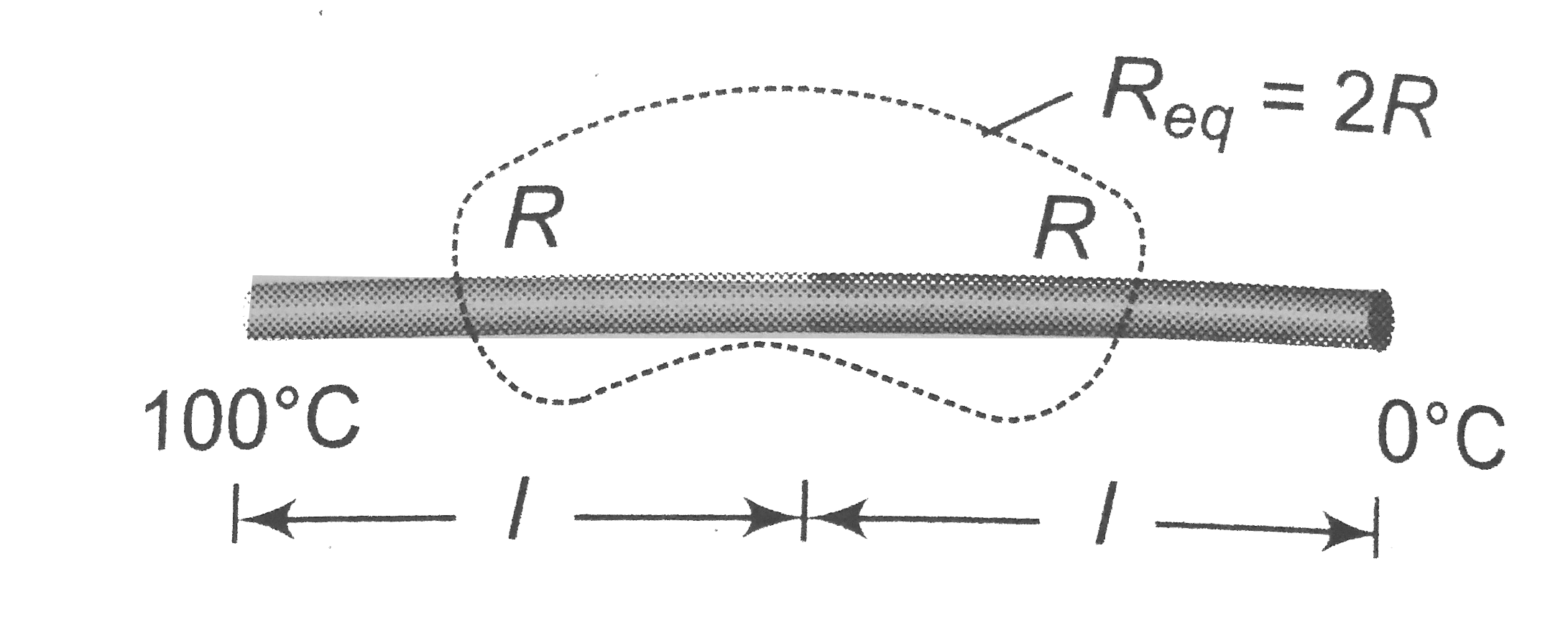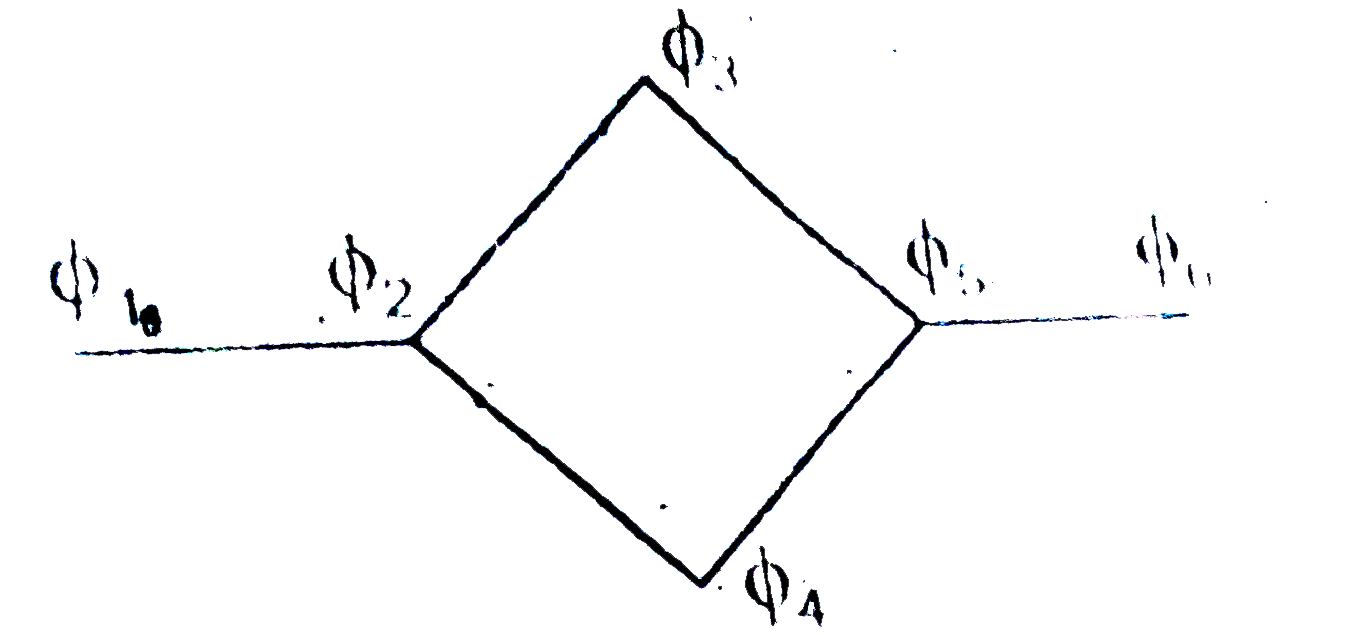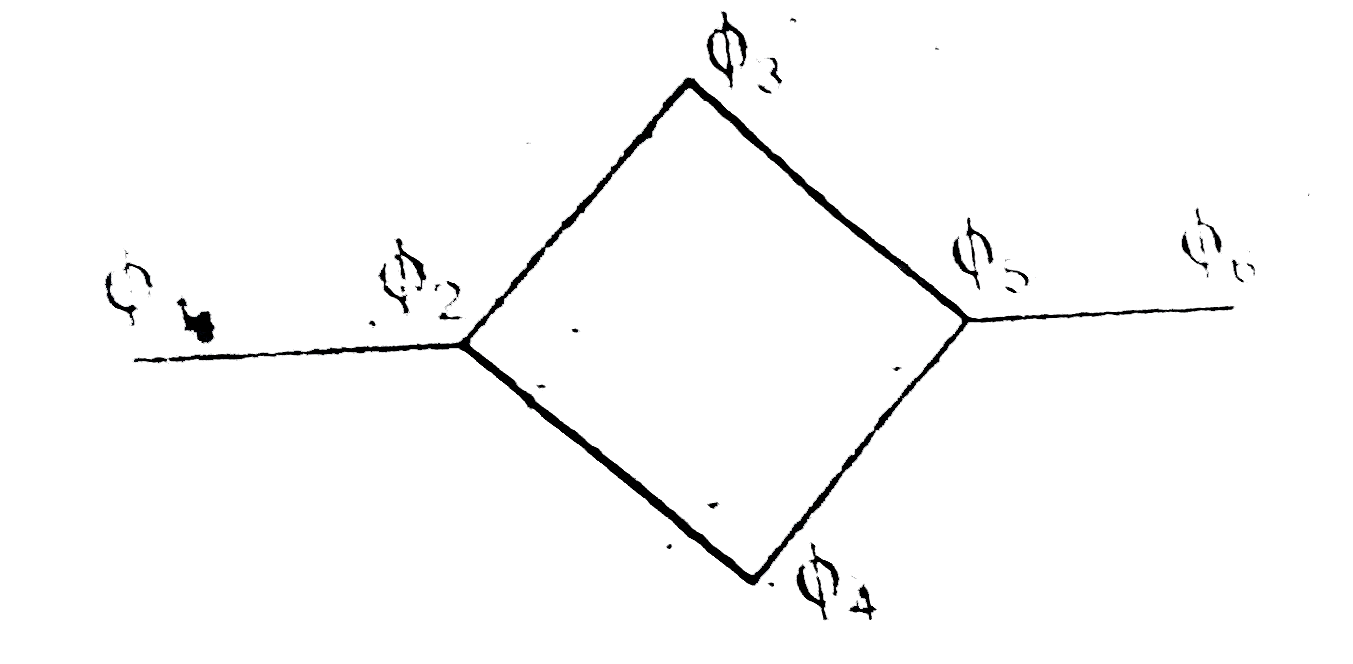Two identical conducting rods are first connected independently to two vessels, one containing water at and the other containing ice at . In the second case, the rods are joined end to end and connected to the same vessels. Let gram per second be the rate of melting of ice in the two cases respectively. The ratio is
The correct Answer is:C
Initially the rods are placed in vessels as shown below

..(i)
Finally when rods are joined end to as shown

..(ii)
Form equation (i) and (ii) , .
Topper's Solved these Questions
- THERMAL PROPERTIES OF MATTERBOOK - A2ZCHAPTER - THERMAL PROPERTIES OF MATTEREXERCISE - Assertion Reasoning
21 Videos
- THERMAL PROPERTIES OF MATTERBOOK - A2ZCHAPTER - THERMAL PROPERTIES OF MATTEREXERCISE - NEET Questions
47 Videos
- THERMAL PROPERTIES OF MATTERBOOK - A2ZCHAPTER - THERMAL PROPERTIES OF MATTEREXERCISE - Transmission Of Heat : Radiation
28 Videos
- ROTATIONAL DYNAMICSBOOK - A2ZCHAPTER - ROTATIONAL DYNAMICSEXERCISE - Chapter Test
29 Videos
- UNIT, DIMENSION AND ERROR ANALYSISBOOK - A2ZCHAPTER - UNIT, DIMENSION AND ERROR ANALYSISEXERCISE - Chapter Test
28 Videos
Similar Questions
Six identical conducting rods are connected as shown in figure. In steady state temperature of point ϕ1 is fixed at 100∘C and temperature of ϕ6 at −80∘C

Q. What is the temperature of ϕ2?
View SolutionSix identical conducting rods are connected as shown in figure. In steady state temperature of point ϕ1 is fixed at 100∘C and temperature of ϕ6 at −80∘C

Q. What is the temperature of ϕ5?
View Solution
Knowledge Check
Two identical conducting rods are first connected independently to two vessels, one containing water at 100∘C and the other containing ice at 0∘C. In the second case, the rods are joined end to end connected to the same vessels. Let m1andm2 g/s be the rate of melting of ice in the two cases respectively, the ratio m1m2 is
A1:2B2:1C4:1D1:4Two identical rods are connected between two containers on of tehm is at 100∘C and another is at 0∘C. If rods are connected in parralel them the rate of melting of ice is q1gm/sec.
If they are connected in series then the rate is q2. The ratio q2/q1 isA2B4C1/2D1/4One end of a cylindrical rod is kept in steam chamber and the other end in melting Ice. Now 0.5gm of ice melts in 1sec if the rod is replaced by another rod of same length half the diameter then rate of melting of ice will be (in gm/sec) .
A0.25B0.5C1D2
Six identical conducting rods are connected as shown in figure. In steady state temperature of point ϕ1 is fixed at 100∘C and temperature of ϕ6 at −80∘C

Q. What is the temperature of ϕ3?
View SolutionOne end of 0.5 m long metal rod is in steam at 100∘C and the other end is put in ice at 0∘C. If ice melts at the rate of 10 g/min, calculate the thermal conductivity of the metal. Take, cross sectional area of rod=2πcm2 . Latent ice of heat = 80 cal/g
View SolutionTwo identical rods are connected between two containers. One of them is at 100∘C containing water and another is at 0∘C containing ice. If rods are connected in parallel then the rate of melting of ice is q1g/s . If they are connected in series then teh rate is q2g/s . The ratio q2/q1 is
View SolutionTwo vessels A and B contains acid and water in the ratio 4:3 and 5:3 respectively. Then the ratio in which these mixtures to be mixed to obtain a new mixture in vessel C containing acid and water in the ratio 3:2 is
View SolutionTwo identical rods are connected in parallel. One end of the rods is maintained at 100∘C and other end is kept in 0∘C ice . The rate at which the ice melts is Q1 gm/sec . Now the rods are connected in series . The ends are again maintained at 100∘C and kept in 0∘C ice . Now the rate at which ice melts is Q2 gm/sec . Then Q2/Q1 is
View Solution
